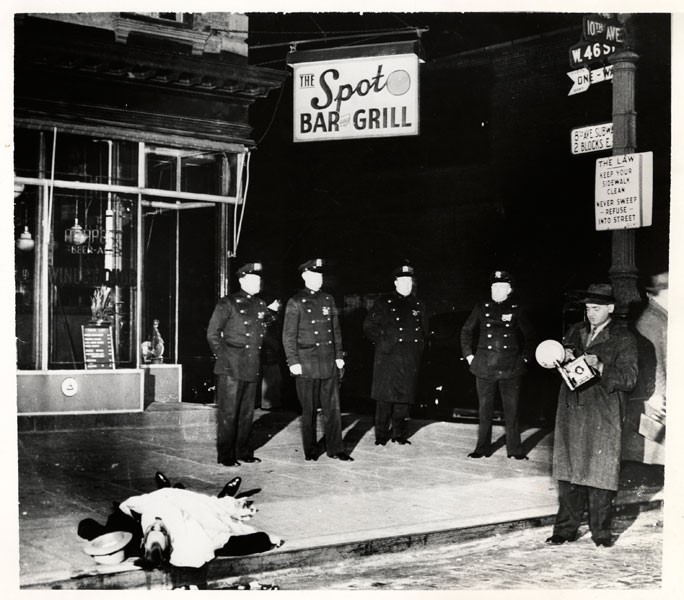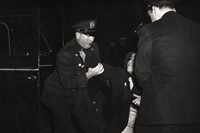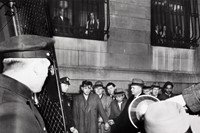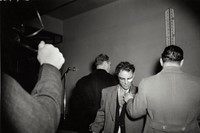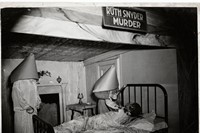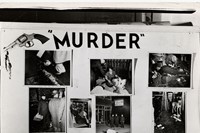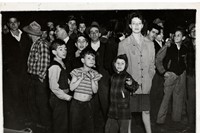Timeliness is vital to the success of any photojournalist and Arthur Fellig, better known as Weegee, possessed it in abundance. Between 1935 and 1946, Weegee was one of the most successful visual reporters of the New York crime scene, renowned for
Timeliness is vital to the success of any photojournalist and Arthur Fellig, better known as "Weegee", possessed it in abundance. Between 1935 and 1946, Weegee was one of the most successful visual reporters of the New York crime scene, renowned for being in the right place at the right time – hence the nickname, a nod towards this prescient Ouija-board-like skill.
When Weegee started out as a fresh-faced freelancer, general urban mayhem and gangland murders were rife across New York City, and there were at least eight daily newspapers (with wire services newly able to handle photographs) hungry for images of such events to entice their readers. Thus the zealous Weegee would cruise the streets by night, armed with a police radio transmitter, and appear onsite at the slightest hint of catastrophe – often before police and more importantly before his competitors – to capture it on film. He even, supposedly, housed a complete darkroom in the trunk of his car to further hasten the process from event to print.
Timing and determination aside, Weegee was also a man of considerable artistic talent. During his 10 years as a photojournalist, he constantly sought out new and inventive means of approaching his subjects and rendering them newsworthy, in many ways setting a precedent for tabloid journalism as we now know it. This unique approach is the subject of the International Center of Photography’s new exhibition, entitled Weegee: Murder Is My Business (after Weegee’s self-curated exhibition at the Photo League in 1941).
"Weegee's distintive style of photography pulls the viewer into the heart of the drama, bestowing them with the morbid thrill of the voyeur, but at a safe distance"
On display are over 100 of Weegee’s flashlit black and white images, considered in the context of their original presentation in historical newspapers and exhibitions. Particularly highlighted is the photographer's talent for capturing not only the unfortunate murder victims but also the frantic commotion so often surrounding them. Onlookers crane their necks to get a better view and grief-stricken relatives struggle against police restraint: striking demonstrations of what Diane Arbus referred to as Weegee's "wild dynamics". His distinctive style of photography pulls the viewer into the heart of the drama, bestowing them with the morbid thrill of the voyeur, but at a safe distance. This ability, paired with his incredible output – he claimed to have shot 5,000 murders – accounted for Weegee's fast ascent to the top of his game, as well as his ensuing egotism: he used to stamp images "Weegee the Famous" and dubbed himself the "official photographer for Murder Inc.".
But perhaps of most interest to a modern-day audience is the historical insight that the photographs permit, rendered in the shameless detail that Weegee went to such lengths to convey. As ICP chief curator Brian Wallis explains: “Weegee was in fact one of the most original and enterprising photojournalists of the 1930s and 40s… He favoured unabashedly low-culture or tabloid subjects and approaches, but his Depression-era New York photographs need to be considered seriously alongside other key documentarians of the century.”
Weegee: Murder Is My Business runs at the International Center of Photography, New York from now until September 2.
Text by Daisy Woodward
